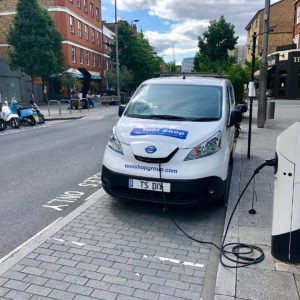This decade is being trumpeted as a turning point in the emergence of the “plug-in” electric vehicle — PEV in the global marketplace. So how does the U.S. consumer feel about purchasing a PEV?
In a 2019 national survey undertaken by NORC at the University of Chicago for the Union of Concerned Scientists and Consumer Reports, 36 percent of all American prospective car buyers stated that they would consider buying (31 percent) or definitely buying (5 percent) a PEV within the next two years.
Moreover, 59 percent and 51 percent, respectively, of survey respondents believe that a lower purchase price and longer PEV driving range would be most effective in increasing their interest in purchasing a PEV.
In addition, 75 percent of prospective buyers want incentives and tax rebates for purchasing PEV’s and 63 percent demand that their state governments should make it easier for them to purchase PEV’s.
In 2018, U.S. PEV sales reached a historic high, with American consumers buying a record 359,000 vehicles. However, in 2019, PEV sales plummeted to 318,000 vehicles, an 11.4 percent year-to-year sales decline.
Moreover, 2019 U.S. sales by original equipment manufacturers other than Tesla (56 percent, or 179,000 units, of all U.S. sales of PEVs) show a combined decrease of -17 percent versus -6 percent for Tesla.
So what is the percentage of PEVs among all U.S. retail light vehicle sales in 2019?
With total U.S. light vehicle sales for 2019 at 17 million units, PEVs make up approximately 1.87 percent of annual unit sales volume. The Center for Automotive Research, an Ann Arbor, Michigan,-based independent research organization, does not forecast PEVs to make up more than 10 percent of U.S. vehicle sales until the latter part of this decade.
While U.S. consumers say they want PEVs, these sentiments come with several caveats.
As noted in the NORC national survey, consumers want lower vehicle prices, longer driving range (before re-charging), greater access to PEV charging stations, and federal and state financial subsidies before making a PEV purchase.
And the PEV sales volume numbers reflect this consumer reality. Automobile manufacturers, however, are all in with PEVs and view this market segment as the growth part of overall light vehicle sales, as they have announced 104 new PEV models for the fourth quarter of 2020, up from 79 in fourth quarter of 2019.
Yet this automotive industry PEV enthusiasm is driven primarily (at least in the short-term) by the regulatory requirements of stringent government fuel-economy standards and auto emission policies, more than actual consumer demand.
In general, PEVs are viewed as “loss leaders” by the industry (with the company exception being Tesla), as these vehicles cost about $12,000 more to manufacture than comparable internal combustion powered vehicles in the small- to midsize segment and small utility vehicle segment, with lithium-ion battery costs representing the largest single factor in this price differential.
Without existing (and continuing) federal and state consumer PEV subsidies, the automotive industry would be carrying an even more onerous financial burden. However, the automotive industry is resolved to absorb these financial losses until lithium-ion battery prices decrease sufficiently, thus shifting PEV per vehicle costs from “red” to “green.”
In August 2018, the United Auto Workers (UAW) released a study, “Taking the High Road: Strategies for a Fair EV Future,” which outlines the threats of PEV manufacturing on future U.S. automotive employment. For example, the simplicity of the manufacture of a PEV powertrain “could reduce the amount of labor, and thus jobs, associated with vehicle production.”
Also, the UAW is concerned that the mechanical simplicity of the PEV components could lead to the Big Three automakers outsourcing production to suppliers that compete primarily on low cost. Where will the greatest employment impact be found in the manufacturing process? In the engine and powertrain factories.
“A UBS-commissioned teardown of a Chevy Bolt found that the EV powertrain had over 80 percent fewer moving parts than a comparable ICE powertrain and improved technology and design will allow for greater EV powertrain integration, leading to even fewer parts,” says the UAW study.
While the automotive industry intends to retrain its employees as they scale up PEV production (which the UAW demands from employers) over the next decade, it is inevitable that advanced robotics, enhanced AI and lithium-ion battery technology will continue to reduce the need for workers.
In the short term, U.S. PEV sales in 2021 will decline for a second straight year, a direct result of such factors as a continuation of weak consumer demand, the COVID-19 pandemic, a short-term recession and the persistence of low-cost gasoline.
Perhaps the automotive industry should take a lesson from their experience with the hybrid EV.
It took many years before the American consumer accepted this technology, and increased vehicle sales came with manufacturing scalability and a reduced retail price tag.

